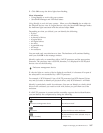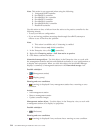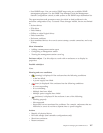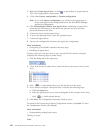v Configuring RAID
Configuring
two ServeRAID controllers in a failover environment:
Note: This action is not supported when using the following controllers:
v Integrated RAID controller
v ServeRAID-5i controller
v ServeRAID-6i/6i+ controller
v ServeRAID-7t controller
v ServeRAID-8i controller
v ServeRAID-8k/8k-l controller
v HostRAID controller
You
can configure two ServeRAID controllers in a failover environment when
using Microsoft Windows 2000 or Microsoft Windows NT 4.0. Recent versions of
ServeRAID device drivers utilize fault-tolerant technology. With fault tolerance,
you can pair two controllers and connect them to the same enclosure to ensure
access to the physical drives, even after one controller fails.
Failover requires specific controller settings. You must set or change these settings
by using the ServeRAID Manager in bootable-CD mode. The settings are the
following:
v Controller name
v Partner controller name
v SCSI initiator IDs
Use Configure for Clustering to change these settings. You can use this action to
view the settings from the installed ServeRAID Manager. To set or change these
settings, you must use this action in bootable-CD mode.
Important: Be sure to review Configuring IBM ServeRAID Controllers for Failover.
More information
v Failing from active to passive controller (action)
Steps
for hot-replacing a ServeRAID controller: If you are hot-replacing a ServeRAID
controller in a server that you are monitoring remotely, print these steps so you
can refer to them while working at the server.
1. Review the Safety Information in the ServeRAID book and the Safety
Information book provided with your IBM server.
2. Detach the SCSI cables from the ServeRAID controller.
3. Open the locking handle and raise the latch.
4. Unseat the controller from the PCI slot and remove the controller from the
server.
5. Insert the replacement controller in the PCI slot.
6. Lower the latch and close the locking handle.
7. Connect the SCSI cables to the replacement controller.
More information
v Replacing a ServeRAID controller (action)
v Using Active PCI features
Failing
from the active to the passive controller:
Chapter 4. Managing ServeRAID devices 113


















